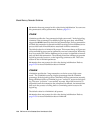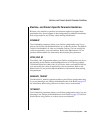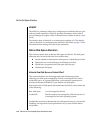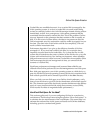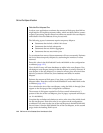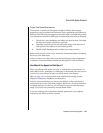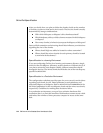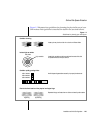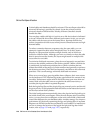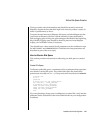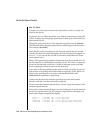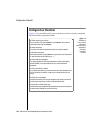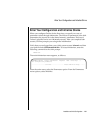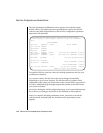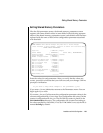
1-46 IBM Informix OnLine Database Server Administrator’s Guide
OnLine Disk Space Allocation
Critical tables and databases should be mirrored. The root dbspace should be
mirrored. Mirroring is specified by chunk. Locate the primary and the
mirrored chunk on different disks. Ideally, different controllers should
handle the disks.
You can place a table with high I/O activity on a disk device that is dedicated
to its use. When disk drives have different performance levels, you can put
the tables with the most use on the fastest drives. Separate disk devices
reduce competition for disk access when joins are formed between two high-
demand tables.
To reduce contention between programs using the same table, you can
attempt to spread the table across multiple devices. To do this, locate a
tblspace in a dbspace that includes multiple chunks, each of which are
located on different disks. Although you have no control over how the table
data is spread across the chunks, this layout might result in multiple disk
access arms for one table.
To minimize disk head movement, place the most frequently accessed data
as close to the middle partitions of the disk as possible. (When a disk device
is partitioned, the innermost partitions have cylinder numbers that are
nearest the middle of the range ofcylinder numbersand generallyexperience
the fastest access time.) Place the least frequently used data on the outermost
partitions. This overall strategy minimizes disk head movement.
When two or more large, growing tables share a dbspace, their new extents
can be interleaved. This interleaving creates gaps between the extents of any
one table. Performance might suffer if disk seeks must span more than one
extent. Work with the table owners to optimize the table extent sizes, or
consider placing the tables in separate dbspaces.
Both the logical log files and the physical log are extremely active and should
be given priority in disk placement. Both should be on the fastest devices and
on the most central disk cylinders.
The initial configuration automatically places the physical and logical logs in
the initial chunk of the root dbspace. Since the root dbspace also is extremely
active, you can place the root dbspace on the most central disk cylinder and
create other dbspaces for user database tables. Another strategy is to improve
performance by physically separating the logs and placing them in separate
dbspaces on disk devices that are not shared by active tables. For instructions
on how to change the location of the logical and physical log after initial-
ization, refer to page 3-31 and page 3-107, respectively.



